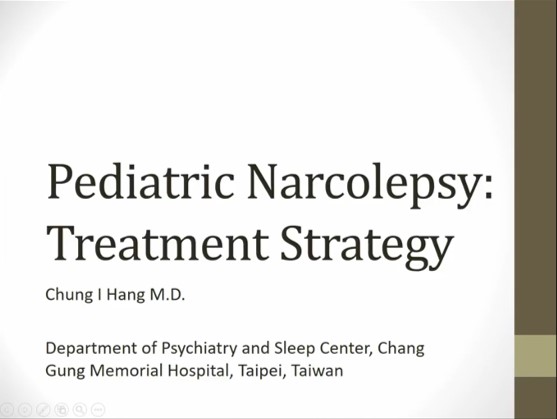
Introduction: Pediatric narcolepsy is a chronic sleep-wakefulness disorder. Its symptoms frequently begin in childhood. Symptoms of pediatric narcolepsy include excessive sleepiness, cataplexy, sleep paralysis, sleep terror, and hypnagogic or hypnapompic hallucinations. These symptoms impaired children’s function and negatively influenced their social interaction, studying, quality of life, and may further lead to emotional and behavioral problems. Therefore, early diagnosis and intervention are essential for children’s development. With our review, pediatric narcolepsy’s treatment approach should include medication, behavioral modification, and education/mental support.
Subject/Method: We investigated and reviewed previous studies about pediatric narcolepsy via Pubmed, Cochrane library and other medical journal resources. With our review, we wish to present a comprehensive treatment strategy for pediatric narcolepsy.
Through our clinical experience, we modify an applicable behavioral model for treating pediatric narcolepsy:
(1) Regular sleep/wake schedule
(2) Modified sleep environment
(3) Relaxation before bedtime & wake-up routine
(4) Risk prevention
(5) Educating people around children with narcolepsy
(6) Mental support
Results: Narcolepsy is a chronic neurological disorder that currently has no cure. The goal of treatment is to reduce daytime sleepiness and other disturbing symptoms and improve daytime function and quality of life. Treatment plans for childhood narcolepsy should be comprehensive and typically involve pharmacological and non-pharmacological approaches. Only sodium oxybate had been proven effective in pediatric patients through randomized placebo-controlled studies. Other wake promoting medications and antidepressants are used as off-label, and still warrant more studies to prove their efficacy and investigate possible side effects in pediatric narcolepsy. When prescribing medications for pediatric narcolepsy patients, it is important to acknowledge evident-based safety and the growth issues within each medication. It is also important to provide sufficient psychological counseling and behavioral modification for pediatric narcolepsy patients in multiple environments, and to enhance the cooperation between school teachers, family members, and the medical team.
Discussion: Treatment of pediatric narcolepsy should involve the use of medication, behavior modification, education, and mental support. Although psychosocial interventions such as behavior modification is shown to benefit patients and the family, prospective long-term follow-up is necessary to evaluate the prognosis ofoutcome of children with narcolepsy.
Support: Taiwan National Science and Technology Council
Summary
關鍵字:
Narcolepsy